Smart Review | Science Popularity Picks Up Steam with littleBits STEAM Student Set
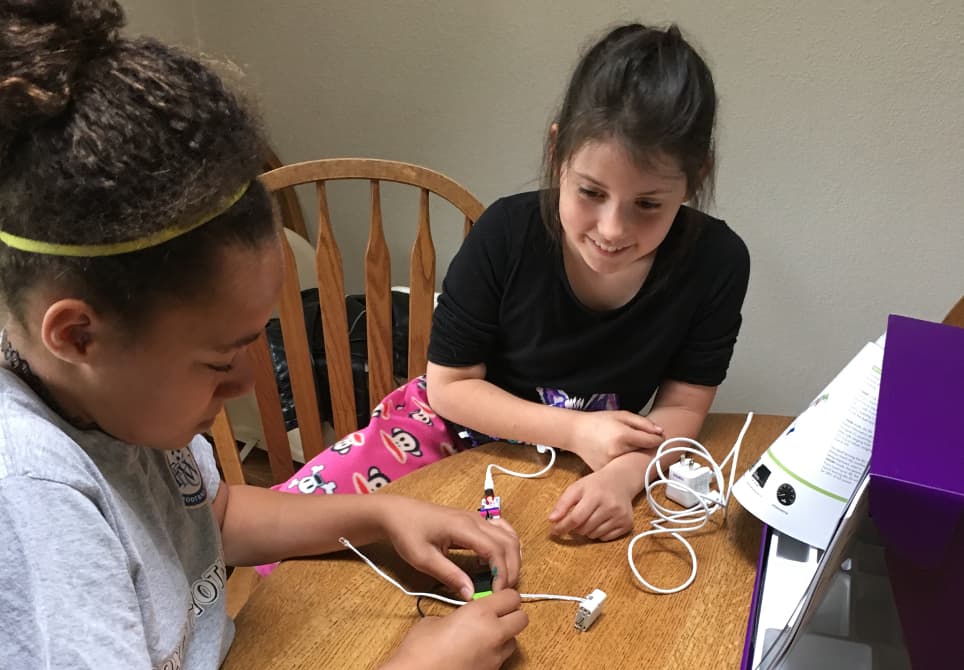
As STEM education shifts into national focus following President Obama’s call to prepare 100,000 new and effective STEM teachers over the next decade, the need for innovative educational tools is stronger than ever before. Add in “Arts” to that mix and you get STEAM, which encourages students to learn through inventing, creating and designing.
So how can we help support our teachers to engage students in powerful STEAM learning through invention? Edtech startup littleBits is offering one option through its STEAM Student set, a toolbox containing LEGO-like electronic building blocks that connect via magnet to build basic functional technology.
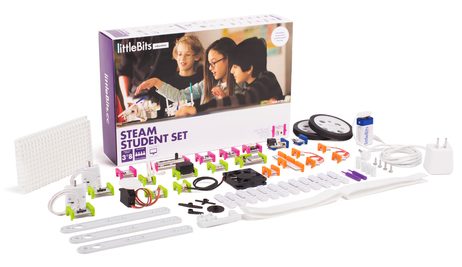 Inside the kit are 19 Bits–littleBits’ electronic building blocks–and 38 accessories, as well as a 72-page Student Invention Guide containing guided invention challenges with step-by-step instructions. Projects include:
Inside the kit are 19 Bits–littleBits’ electronic building blocks–and 38 accessories, as well as a 72-page Student Invention Guide containing guided invention challenges with step-by-step instructions. Projects include:
- Invent a Self-Driving Vehicle: explores the concept of friction
- Hack Your Habits: encourages students to track their habits and invent something to improve their daily lives
- Invent a Throwing Arm: experiments with the forces of motion and simple machines
An Invention Log worksheet encourages student reflection and documentation, and a Curricular Crosswalk chart provides an overview of the Next Generation Science Standards, Grade Levels and Common Core Standards that can be met by, or extended to meet, specific STEAM Student Set Challenges.
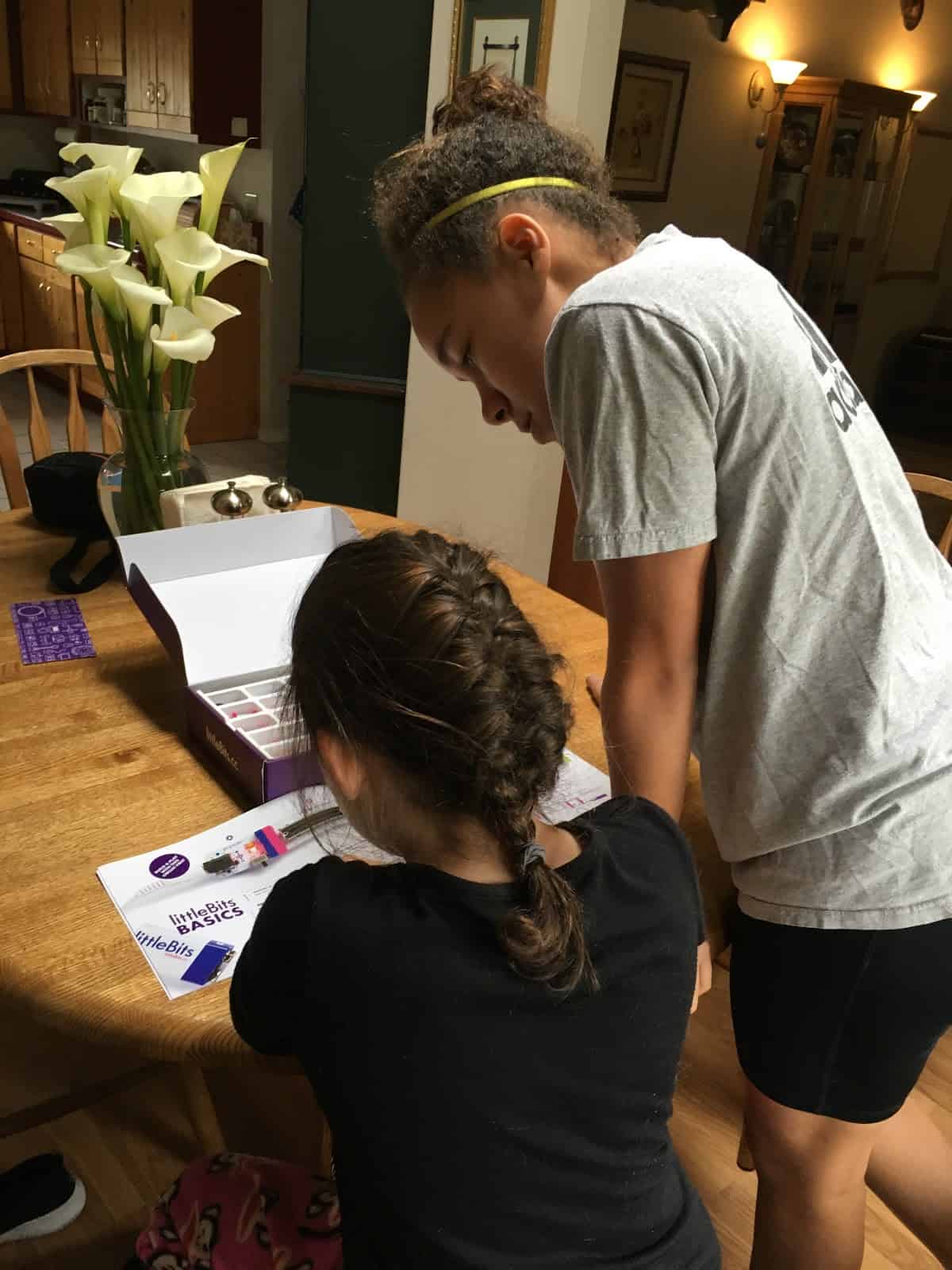 The kit is geared toward students in third through eighth grade, so we decided we’d better put it to the test with some experts in that field of study. Maggie and Maleah, who attend fourth grade and fifth grade respectively, spent an afternoon testing out the kit’s contents to see if it met their standards of combining fun and learning. Here are the results.
The kit is geared toward students in third through eighth grade, so we decided we’d better put it to the test with some experts in that field of study. Maggie and Maleah, who attend fourth grade and fifth grade respectively, spent an afternoon testing out the kit’s contents to see if it met their standards of combining fun and learning. Here are the results.
Student Review
Q: Was the kit easy to use?
A: At first it wasn’t, because there are so many sides to the circuits that you can use to build things and they are all magnetized. But once we read through the directions it comes with and looked at the pictures, we figured it out and started building stuff pretty quickly.
Q: Are the directions and pieces easy to read and identify?
A: Yes, once we looked through the different things you could build and sorted through all of the circuits and stuff in the different compartments inside the box, it was easy to start building the different projects they showed.
Q: What was your favorite part?
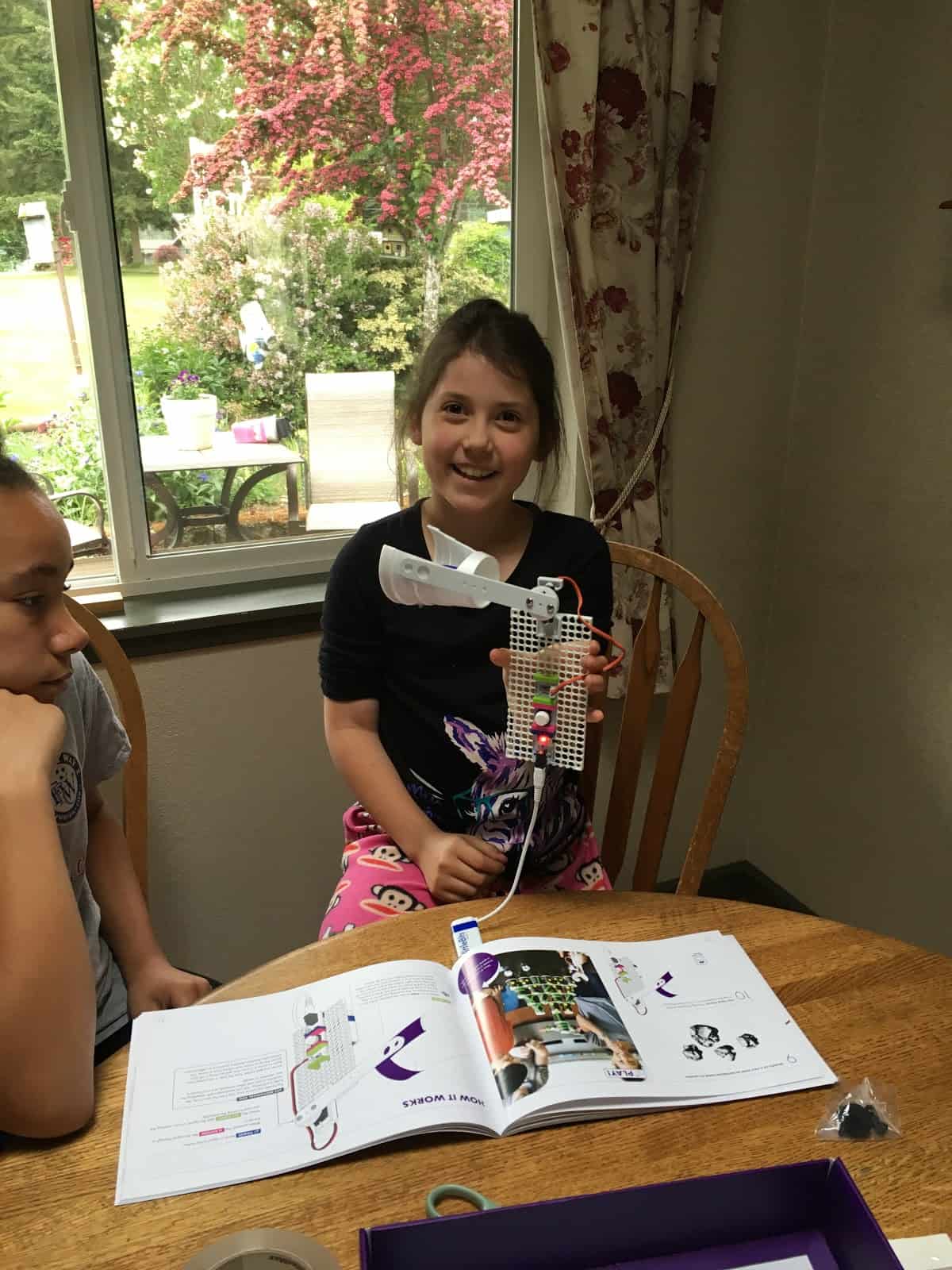 A: Maggie–We built one long circuit together that was a lot of fun, and I also liked how the circuit to build the police car actually made a siren noise and how far the Throwing Arm threw stuff.
A: Maggie–We built one long circuit together that was a lot of fun, and I also liked how the circuit to build the police car actually made a siren noise and how far the Throwing Arm threw stuff.
A: Maleah–I liked how there is so much to build. You can build a bunch of stuff at one time.
Q: Would you enjoy getting more pieces to add to the kit?
A: YES! Can we still play with this even though testing is done?
The “expert” verdict? This kit is easy to use and a lot of fun. It reminded them of the “cool” Robotics class at their school, as well as the popular project everyone in fourth grade participates in, where they get to figure out how to use wires and a battery to light up a lightbulb.
Parent Review
Their father (James) is an electronics technician, so we also asked for his perspective on watching the girls use the kit, both professionally and as a parent:
Q: What did you think of this kit overall?
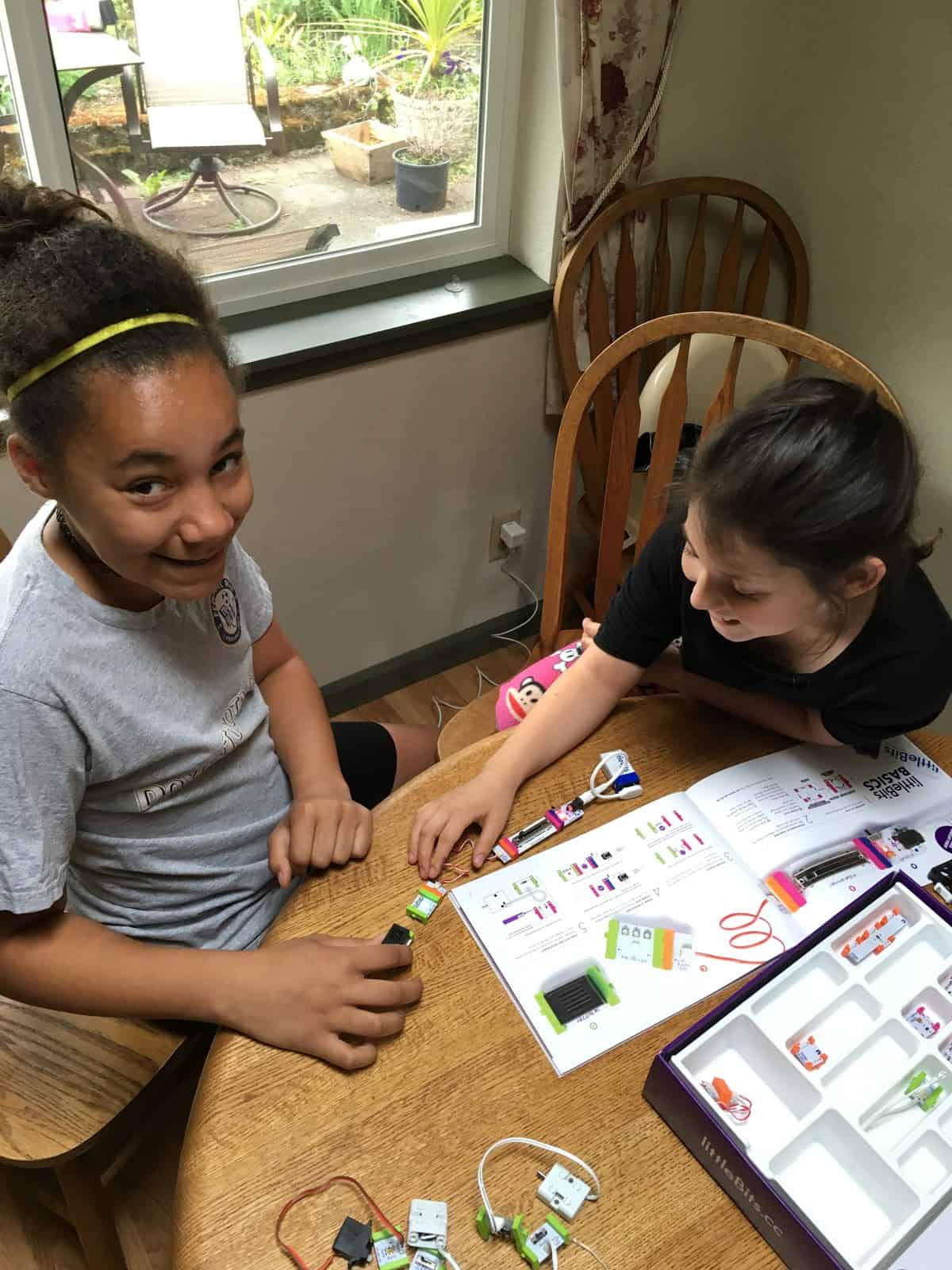 A: It’s pretty easy to use and the pictures they include are great. I think it’s a very interesting concept to use colors and puzzle-type matching interfacing to teach kids how to build the different projects in the book. Teaching them about inputs and outputs helps them understand you have to do something to get something, and everything plus the power has to be hooked up carefully and correctly or things just aren’t going to work.
A: It’s pretty easy to use and the pictures they include are great. I think it’s a very interesting concept to use colors and puzzle-type matching interfacing to teach kids how to build the different projects in the book. Teaching them about inputs and outputs helps them understand you have to do something to get something, and everything plus the power has to be hooked up carefully and correctly or things just aren’t going to work.
Q: Is there anything in particular you thought was useful for students?
A: I like how they share examples of real-life applications in the front of the instruction book; it’s so important for kids to connect what they’re doing with these pieces in their hands to what they already know, even on simple things like the police siren or the clock you can build. Doing this will help them to understand how and why something happens. They’re having fun and playing, but also learning how actual things around them work.
Q: Do you think the target audience age/grade group is correct?
A: I think it should be very easy for those age groups, as long as they have basic reading and comprehension skills. The pictures in the directions are definitely helpful because they really help kids visualize the correct outcome when things are installed and hooked up right.
Information For Teachers
The littleBits STEAM Student Set includes a Teacher’s Guide that provides hours of detailed companion lessons, curricular connections, implementation strategies and helpful tips, as well as a mobile app that provides even more ideas for the classroom
littleBits takes it even one step further with littleBits STEAM PD, which provides educators training on engaging ways to bring STEAM into classrooms, libraries and makerspaces. The six hours of online training is self-paced, and you receive a PDU certificate upon completion.
For more, see:
- Infographic | The Rise of Maker Ed
- Every Student is a STEM Student
- Girls Who Code: Connecting GenDIY Women to STEM
Getting Smart was provided the littleBits STEAM Student Set for review.
Stay in-the-know with all things EdTech and innovations in learning by signing up to receive the weekly Smart Update.







0 Comments
Leave a Comment
Your email address will not be published. All fields are required.